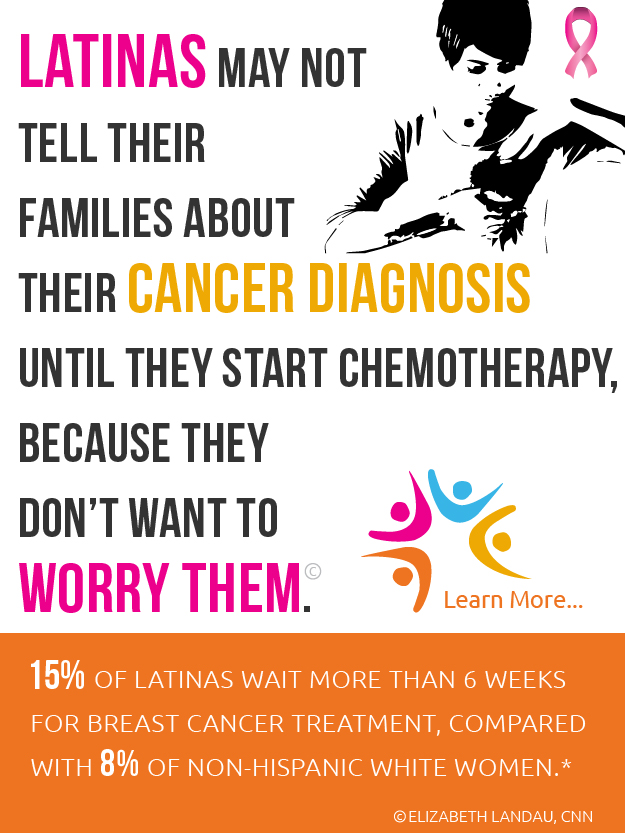Ironically, while any lump should be easier to detect in a man, the fact that male breast cancer is so unusual often leads patients –and physicians— to assume it is anything but cancer. This lack of awareness is partly to blame for the late diagnosis typically seen in male patients. While the prevalence of advanced cases of male breast cancer suggests a more severe disease in men, current studies show survival outcomes are similar to women’s when comparing the same stage of the condition.
“I can’t say how many patients I have seen who felt a lump and didn’t do anything for long periods of time because they didn’t think they could have breast cancer; even physicians don’t have a high level of suspicion for breast cancer in a man. So I think it is important to raise awareness that this exists and, even though it is rare, that men can get this disease and die from it,” Sharon Giordano, MD, chair of Health Services Research and associate professor of Breast Medical Oncology at MD Anderson, told Saludify.
Male breast cancer: The risks
Representing approximately 1 percent of all breast cancer cases, about 2,240 men will be diagnosed and 410 will die from this disease in the U.S. this year, as estimated by the American Cancer Society (ACS).
With a 1 in 1,000 chance of developing breast cancer –compared to odds of 1 in 8 for women— male cases usually fall within four main types listed by the National Cancer Institute:
- infiltrating ductal carcinoma
- ductal carcinoma in situ
- inflammatory breast cancer
- Paget disease of the nipple
Based on the limited data available, researchers believe there are more similarities with breast cancer in women than distinct features in male breast cancer.
Men, however, tend to be diagnosed at an older age, between 60 and 70 years old, and are more likely to have estrogen receptor-positive tumors, that is, cancer growth stimulated by estrogen.
Obesity, alcohol consumption and environmental exposure have been linked to a greater risk of breast cancer in men, but more conclusive evidence is needed.
Known risk factors for male breast cancer include:
- Radiation: Previous radiation exposure, if the man was treated for cancer, or from other sources, is believed to increase the risk for breast cancer.
- Klinefelter syndrome: Men with this congenital condition have extra X chromosomes and higher than normal estrogen levels, resulting in a slightly elevated risk.
- Liver disease: Cirrhosis leads to higher estrogen, and relatively lower androgen levels in men, increasing the occurrence of benign breast growth and cancer.
- Family history of breast cancer: Having close relatives with breast cancer increases the risk for men, as for women, of developing this disease.
- Inherited gene mutations: Men with a BRCA2 mutation may have an 8 percent lifetime risk of developing breast cancer, while mutations in the BRCA1 gene are believed to have less impact on their odds, similar to defects in CHEK2 and PTEN genes. Genetic mutations are more common among men of Jewish descent and probably explain the greater prevalence among African American men.
“Men with BRCA mutations certainly have an increased risk of breast cancer, though not as high as female carriers. And there is an increased risk of prostate cancer, so they need early surveillance,” says Dr. Giordano, which is why every man diagnosed with breast cancer she sees is referred to genetic counseling and most end up getting tested.
Conversely, in families with a confirmed BRCA mutation or a strong history of breast cancer, it is reasonable to test all members –men included— as this leading expert in male breast cancer states:
“It is relevant for them, but particularly if they have sisters or children, they can identify a mutations that is running in their family that may have consequences for other members.”
Common symptoms of breast cancer in men
If one would expect the smaller size of the male breast should normally facilitate early detection, it also contributes to cancer’s rapid spread to the surrounding tissues. Unfortunately, men are less likely to act upon discovery of suspicious symptoms, leading to a more advanced stage at diagnosis.
Men need to know breast cancer is not limited to women, survivors insist, and watch for signs listed by the ACS that include:
- A lump or swelling, usually painless
- Skin dimpling or puckering
- Nipple turning inward
- Redness or scaling of the nipple or breast skin
- Discharge from the nipple
Additionally, if cancer has spread to the lymph nodes, these may be felt around the collarbone or under the arm. However, not all lumps or swelling are the result of cancer. A benign condition known as gynecomastia, which intermittently affects many men starting in adolescence and throughout their life, has similar symptoms and may lead them to dismiss any breast changes.
Treating male breast cancer
Men affected by this disease benefit from all the advances made in treating female breast cancer, but lack independent studies. Treatments options are the same as for women, including a combination of surgery, chemotherapy, radiation and hormonal therapy, while differences in protocol are mainly due to the male anatomy.
“In general we extrapolate from the guidelines we have for women and treat men similarly, but there is not a big cosmetic difference in a man between having a mastectomy and a lumpectomy; so they are more likely to have a mastectomy, which means many won’t need radiation,” explains Dr. Giordano.
Since the physical consequences are less of a concern among men, surgery is generally not followed by reconstruction. However those who do receive radiation after this procedure lose body hair in this area, exposing the resulting scars.
Tamoxifen, the same drug used to treat premenopausal women, is prescribed for men with estrogen receptor-positive breast cancer, an estimated 90 percent of male patients. While it is generally well tolerated, some men experience “menopause-like” side effects that include hot flashes, weight gain and reduced sex drive.
Making strides against male breast cancer
From the initial shock of being diagnosed with a disease perceived as “a woman’s thing” to the awkwardness of being tested in medical facilities focused on treating women, or the permanent disfigurement visible whenever the chest is bared, male patients have a hard time escaping the stigma of breast cancer.
Oliver Bogler, a colleague of Dr. Giordano at MD Anderson, has a unique perspective as a doctor and male breast cancer patient. Sharing his story in the blog, Entering a World of Pink, he hopes to raise awareness and spread the word about current research.
Men diagnosed with this disease have the opportunity to participate in the largest study to date on male breast cancer. Top academic centers in the U.S. and Europe are collaborating on this ongoing clinical trial, aimed at improving the understanding of this rare disease.
“The large number of patients participating in this study can definitely lead to better understanding of what the risk factors are and potentially new risk factors that we don’t know about,” states Dr. Giordano, study chair. “We are just getting ready to open the second part, a prospective data collection. We are going to enroll patients as they are diagnosed with male breast cancer and follow them for 5 years; have patients complete surveys to look at quality of life and side effect of treatment for men vs. women.”
To learn more about this active study go to www.clinicaltrials.gov.












Post your Comment
Please login or sign up to comment
Comments